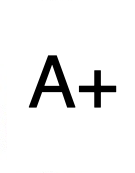Reading Comprehension Skills on the Michigan Test
All of the examinations have a reading comprehension test like the one on this page.
Click here for our Exam Practice Downloads.
You will find another reading exercise on the second part of this page.
Reading Comprehension Exam – Passage 1
Instructions: Read the passage below and answer the questions that follow. The answers are provided after the reading practice test.
When Americans are bored or have too much time on their hands, an easy solution is readily available: simply turn on the tube. One thing for certain is that Americans are constantly being accosted by an overabundance of television programs. Today Americans have three national networks from which to choose: the American Broadcasting Corporation (ABC); the National Broadcasting Corporation (NBC) and the Columbia Broadcasting System (CBS). These networks broadcast programs free of charge to the public, relying on the support of major American commercial enterprises, such as Coca-Cola and Kimberly Clark, in the form of airtime purchased to advertise their products.
Commercial support is, by and large, intertwined with the public’s often temperamental viewing preferences. The Neilson Ratings are statistical indicators which measure such viewing trends by evaluating how many families are watching a certain program on a given network during a particular day or time. If the Nielsen Rating for a certain program is too low, a potential advertiser will be reluctant to purchase airtime during its broadcast as the advertising message will not reach the maximum number of viewers.
Firms will reach the largest audience during what is known as “Prime Time,” the window of advertising opportunity from 7:00 P.M. to 10:00 P.M. Taking the volume of viewers into account, commercial entities devour this airtime with alacrity. A plethora of popular situation comedies, known as “sit-coms,” are aired during these evening hours. Other commercial opportunities exist during morning and afternoon broadcasts of long-running talk shows, game shows, and soap operas, now euphemistically termed “daytime dramas.”
1. Which of the following statements concerning national networks is false?
A) Networks are reliant upon businesses for monetary support.
B) The network’s success depends upon the public’s viewing habits.
C) The national network is also known as the National Broadcasting Corporation.
D) Families do not pay a fee to watch national television.
2. Television programs
A) are few and far between.
B) are broadcast during purchased airtime.
C) are constantly being altered.
D) provide Americans with more than enough options from which to choose.
3. The public’s viewing habits
A) are assessed by the Nielsen Ratings.
B) are constant and unwavering.
C) are influenced by advertising.
D) fluctuate in relation to commercial support.
4. An advertiser will communicate his message to the largest amount of viewers
A) when the Nielsen Rating increases.
B) during the evening hours.
C) in the morning.
D) in the afternoon.
5. Commercial opportunities are
A) most plentiful during the broadcast of soap opera episodes.
B) thwarted by statistical ratios compiled by Nielsen.
C) the best during Prime Time.
D) greater during the morning than during the afternoon.
NOTE: There are 4 reading comprehension passages on each practice test.
When you have finished the test above, go to our Free Grammar and Vocabulary Practice Test
Reading Comprehension Passage 1 – Answers
1. C
2. D
3. A
4. B
5. C
Reading and Understanding Unknown Words – Passage 2
Reading and understanding unknown words in their context is an important skill for the test.
If you do not understand words in their context, you may not be able to answer qestions about the passage correctly.
So, you need to be able to read a text and try to guess the meanings of new words as you go along.
To practice this important reading skill, read this passage and try to guess the meanings of the highlighted words.
The answers are provided after the exercise.
Exercise 2
Instructions: Read the passage below and answer the questions that follow
An efficient electron microscope can magnify an object by more than one million times its original size. This innovation has thereby allowed scientists to study the precise molecules that constitute human life.
The electron microscope functions by emitting a stream of electrons from a gun-type instrument, which is similar to the apparatus used in a television tube. The electrons pass through an advanced electronic field that is accelerated to millions of volts in certain cases. Before traveling through a vacuum in order to remove oxygen molecules, the electrons are focused into a beam by way of magnetic coils.
Invisible to the naked eye, electron beams can nevertheless be projected onto a florescent screen. When striking the screen, the electrons glow and can even be recorded on film.
In the transmission electron microscope, which is used to study cells or tissues, the beam passes through a thin slice of the specimen that is being studied. On the other hand, in the scanning electron microscope, which is used for tasks such as examining bullets and fibers, the beam is reflected. This reflection creates a picture of the specimen line by line.
Reading and Understanding Unknown Words – Answers
magnify = enlarge
innovation = invention
precise = exact
constitute = consist
emitting = giving off
apparatus = mechanism
accelerated = quicken
naked = bare
specimen = sample
More practice
Some of the exams also have a cloze test.
